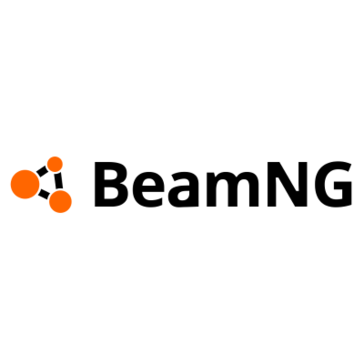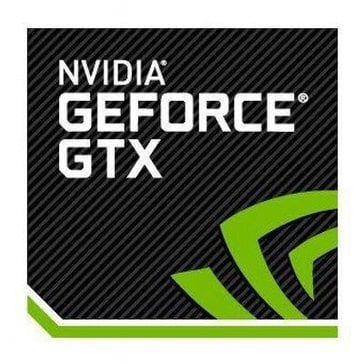Description

BeamNG

Matali Physics
Comprehensive Overview: BeamNG vs Matali Physics
BeamNG Overview
a) Primary Functions and Target Markets
BeamNG is primarily known for its vehicle simulation platform, BeamNG.drive. It functions as a realistic driving simulation that emphasizes soft-body physics for authentic vehicular behavior. The platform is designed to simulate real-world driving conditions, vehicle collisions, and mechanical damages with high accuracy. Target markets include:
- Gaming Enthusiasts: Particularly those interested in realistic driving experiences and vehicle physics.
- Automotive Industry: Used for visualization, demonstrations, and virtual prototyping of vehicle dynamics.
- Educational Institutions: For teaching dynamics, physics, and mechanical engineering concepts.
- Film and Media: Leveraged for realistic vehicular scenes.
b) Market Share and User Base
BeamNG has a niche user base, primarily within gaming and educational sectors. Its realistic physics have made it popular among simulation enthusiasts, but it is not as widely adopted for commercial applications outside gaming and educational sectors. Exact market share figures are not typically disclosed, but its community-driven modding potential and dedicated user base drive its popularity significantly within its niche.
c) Key Differentiating Factors
- Soft-Body Physics: BeamNG's standout feature is its advanced soft-body physics engine, providing highly realistic simulations of vehicle deformation and destruction.
- Customization and Modding Support: Extensive support for mods allows users to create custom vehicles, maps, and scenarios.
- Open-Ended Gameplay: Unlike many traditional games, BeamNG.drive does not have a structured progression system, allowing users the freedom to explore simulations as they wish.
Matali Physics Overview
a) Primary Functions and Target Markets
Matali Physics is a 3D physics engine designed for cross-platform game development and real-time simulations. It features support for complex dynamics and is capable of handling both rigid and soft body dynamics, fluid dynamics, and multi-threading for efficient computation. Target markets include:
- Game Developers: To integrate realistic physics into video games across various platforms.
- Researchers and Academics: For simulations that require authentic physical reactions.
- Entertainment Software Developers: Who require an easy-to-integrate physics solution for animations and applications.
b) Market Share and User Base
Matali Physics operates in a competitive market with other well-known physics engines like PhysX and Havok. While it is not as widely known or adopted as these leading products, it has carved a niche among smaller developers looking for flexible licensing and robust functionality within simulations. Its user base is more oriented towards developers who need specific and customizable physics environments.
c) Key Differentiating Factors
- Cross-Platform Support: Broad support for various platforms including Windows, Linux, and major consoles.
- Broad Scope of Physics Handling: Includes both real-time and non-real-time simulations of complex physical interactions, such as fluids and multibodied systems.
- Efficient Computation: Optimization for multithreading improves performance in computationally intensive applications.
- Flexible Licensing: Offers flexible licensing models to suit the needs of independent developers and smaller studios.
Comparative Summary
-
User Base and Popularity: BeamNG is more consumer-oriented, focusing heavily on driving simulation enthusiasts, and has grown a strong following within that niche. Matali Physics, while less known, serves a more developer-heavy market with particular interest in cross-functional physics applications.
-
Technical Focus: BeamNG shines with its soft-body physics, mainly applied to vehicular simulations, while Matali Physics covers a broader spectrum of physical simulations, suitable for a variety of applications beyond just games.
-
Market Share: BeamNG has a larger presence within its niche markets, driven by consumer interest, whereas Matali Physics targets niche developers within the broader game development ecosystem.
In conclusion, BeamNG and Matali Physics cater to different segments within the simulation and gaming industry, with BeamNG focusing on realism within vehicular contexts and Matali targeting developers interested in diverse and optimized physical simulations.
Contact Info

Year founded :
Not Available
+49 42 140894390
Not Available
Not Available
Not Available

Year founded :
Not Available
Not Available
Not Available
Not Available
Not Available
Feature Similarity Breakdown: BeamNG, Matali Physics
BeamNG and Matali Physics are both involved in the realm of physics simulation, but they serve somewhat different purposes. BeamNG is primarily known for its video game, BeamNG.drive, which features realistic vehicle physics. Matali Physics, on the other hand, is a physics engine used for various applications, including games and simulations. Here is a breakdown of their features:
a) Core Features in Common
-
Realistic Physics Simulation:
- BeamNG: Known for its highly sophisticated soft-body physics, allowing for realistic deformation of vehicles.
- Matali Physics: Offers comprehensive physics simulation capabilities that can be used to model complex physical interactions in real-time.
-
Modular Architecture:
- Both systems are designed to be modular, allowing customization and extension for specific use cases or user needs.
-
Cross-Platform Compatibility:
- Both are compatible with different operating systems. BeamNG.drive is available on Windows, while Matali Physics supports multiple platforms, depending on the product version chosen.
-
Real-Time Interaction:
- Both BeamNG and Matali Physics enable real-time physics calculations, allowing developers or users to interact with simulations dynamically.
b) User Interface Comparison
-
BeamNG:
- The user interface of BeamNG.drive is more game-oriented, focusing on providing an immersive experience for players. It includes menus for selecting vehicles, environments, and scenarios.
- There are also robust modding tools available within the game to allow users to create custom content.
-
Matali Physics:
- Matali Physics does not have a direct user interface like a game but rather integrates into other applications as a backend system. The interaction with Matali Physics is typically through programming APIs and integration into a larger software development environment. Therefore, it is more suited for developers rather than end-users looking for a graphical interface.
c) Unique Features
-
BeamNG:
- Its soft-body physics system is a standout feature, enabling incredibly detailed collisions and deformations. This unique focus on vehicles makes it particularly appealing for automotive simulations.
- BeamNG.drive is known for its extensive modding community, allowing for a large variety of custom vehicles and scenarios.
-
Matali Physics:
- Matali Physics is versatile in that it is aimed at developers who might be looking to incorporate physics simulation in a wide range of applications beyond just gaming, such as VR and scientific simulations.
- It is known for its scalability and performance, designed to handle complex simulations that require stable physics calculations across various platforms.
Overall, while both BeamNG and Matali Physics offer advanced physics capabilities, they serve slightly different markets and use cases, with BeamNG focusing more on gaming and vehicle dynamics, and Matali Physics being a more versatile tool in the developer's toolkit for a range of simulations.
Features

Not Available

Not Available
Best Fit Use Cases: BeamNG, Matali Physics
BeamNG
a) Best Fit Use Cases for BeamNG:
-
Automotive Industry:
- BeamNG excels in realistic vehicle dynamics and crash simulations. It is an excellent choice for automotive companies looking to test and visualize vehicle performance, safety features, or accident reconstructions.
-
Gaming Industry:
- Developers creating driving or simulation-based games can leverage BeamNG for its highly detailed physics engine to offer lifelike vehicle behavior and damage modeling.
-
Research and Development:
- Academic and industrial research projects that focus on vehicle dynamics, driver safety, and autonomous vehicle testing can benefit from BeamNG's advanced simulation capabilities.
-
Film and Animation:
- Production companies involved in CGI and visual effects can use BeamNG to simulate realistic crash scenarios or vehicle stunts, saving time and resources in physical setups.
d) Industry Verticals and Company Sizes:
- Enterprise Level:
- Large automotive firms and research institutions will find BeamNG a robust tool for extensive and detailed vehicle testing and simulations.
- SMEs and Indie Developers:
- Smaller game studios or independent researchers with a focus on driving physics and simulation can use BeamNG for its relatively accessible setup compared to developing an in-house physics engine.
Matali Physics
b) Preferred Use Cases for Matali Physics:
-
Cross-Platform Game Development:
- Companies focused on developing games for multiple platforms, including PC, consoles, and mobile devices, may find Matali Physics appealing due to its portability across systems.
-
Applications Beyond Gaming:
- Industries involved in virtual reality (VR), simulation, and training applications can use Matali Physics for creating realistic physical interactions in varied environments.
-
Visualization and Simulation:
- Businesses specializing in architectural visualization or other complex simulations requiring robust physics modeling might prefer Matali for its integration versatility.
d) Industry Verticals and Company Sizes:
- Mid to Large-Sized Tech Companies:
- Firms with a broader scope in simulation technologies, needing a versatile physics engine to embed within their diverse software products.
- Game Development Companies:
- Particularly those creating cross-platform titles, who require a physics engine capable of maintaining consistent performance and behavior across different hardware configurations.
In summary, BeamNG is optimal for projects requiring highly realistic vehicle physics, while Matali Physics is better suited for broad applications needing cross-platform compatibility and flexible integration. Each system caters to different business needs but can overlap in fields like game development and simulation technology.
Pricing

Pricing Not Available

Pricing Not Available
Metrics History
Metrics History
Comparing undefined across companies
Conclusion & Final Verdict: BeamNG vs Matali Physics
Conclusion and Final Verdict: BeamNG vs Matali Physics
BeamNG and Matali Physics both offer unique features and capabilities, catering to different types of users within the realm of physics simulation and gaming development.
a) Overall Value:
BeamNG: BeamNG is well-known for its realistic soft-body physics, primarily in the context of driving and vehicle simulations. Its ability to model vehicle damage accurately and the community-driven mod support enhance its appeal for both enthusiasts and developers focused on vehicular simulations. Given its standalone application and the robust community base, BeamNG offers excellent value for developers and users specifically interested in vehicle dynamics.
Matali Physics: Matali Physics is a versatile physics engine targeting a broader scope beyond just vehicle simulations. It serves as a foundation for various types of simulations, including gaming, and can be integrated into different development environments. It’s more suitable for developers who need a comprehensive physics engine that provides flexibility for diverse types of physical interactions beyond just vehicles.
Verdict: Considering the specialized nature of BeamNG and the versatility of Matali Physics, the best overall value depends on the specific needs of the user. For vehicle simulation enthusiasts, BeamNG is the superior choice. For developers looking for a more generalized physics simulation engine, Matali Physics offers broader value.
b) Pros and Cons:
BeamNG:
Pros:
- Exceptional realism in vehicle physics and damage modeling.
- Strong community and modding support.
- Continuously updated with new content and improvements.
- Perfect for educational and simulation purposes in vehicular dynamics.
Cons:
- Primarily focused on vehicle physics; not ideal for other types of simulations.
- Limited integration flexibility compared to a full-fledged physics engine.
Matali Physics:
Pros:
- Versatile engine suitable for various types of simulations beyond just vehicles.
- Can be integrated into different development environments and platforms.
- Offers a solid foundation for game developers requiring diverse physics interactions.
Cons:
- Not as specialized in vehicle dynamics as BeamNG.
- May require more technical knowledge to integrate and utilize effectively.
- Smaller community and less accessible to end-users compared to BeamNG.
c) Recommendations:
-
Define Your Needs:
- If your primary interest lies in creating highly realistic vehicle simulations or games where vehicle dynamics are a critical component, opting for BeamNG is recommended.
- If you require a physics engine to handle a wider range of simulation types, including but not limited to vehicles, consider Matali Physics for its adaptability.
-
Evaluate Your Development Environment:
- For users or developers who want a plug-and-play solution with ready-to-use tools, BeamNG is more user-friendly.
- For those who have the technical capability to integrate a physics engine into their existing development pipeline, Matali Physics might provide greater long-term flexibility.
-
Community and Support:
- BeamNG offers a vibrant community with plenty of resources and modding potential, which might be important if community support is important for your project.
- Matali Physics users should ensure they have adequate developer support or internal expertise to leverage the engine effectively.
Ultimately, the choice between BeamNG and Matali Physics should be guided by the specific simulation requirements and the technical capabilities of the user. Each product excels in its intended niche, making them both valuable in the appropriate context.
Add to compare
Add similar companies



